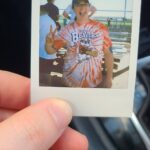Corvallis
Inspired, in part, by: Clinton Duncan Too-Quah-stee,
“he raised his voice to the last in opposition to the destruction of his nation and, after the fact, lamented its passing and attempted to prick America’s conscience.”
Before a trip to the local bowling alley
In Tualatin to meet with a colleague
I notice the town’s
enclaves and parks
I look up the town’s name
One source says
“Tualatin, is an unidentified, abstracted “Indian word”
translating to anything
from lazy to sluggish
to a treeless plain
to (river) forks
to the name
of the local Kalapuya band, the Atfalati.”
Standing on a street corner, I look up and see
“Sioux Court” in white letters outlined in green
embellished with the town’s, vaguely
tribal-inspired T logo
I see Apache Drive. Cheyenne Way. Iroquois Drive. Piute Court. Chinook Street.
All bunched together
All out of context
All the same
neatly organized Indian names
Just like in the neighborhoods
Clairemont Mesa, California
Ahwatukee, Arizona
Just like Cherokee Village, Arkansas
Just like Medford Lakes, New Jersey
And so on
And so on
All of these towns have a Cheyenne Avenue, Drive, Trail, or Way
They all have Sioux and Iroquois, Apache, Chinook, and Piute/Paiute
Three of those host streets are named Tonto
Either referencing the so-called Tonto Apache
or the most famous fictional Indian of all
At least that fiction would be honest, up front
As early as 1900
American city planners
abstracted street names
using Indian themes
like these
neighborhoods changed the names of numbered streets
Twenty-Seventh, Twenty-Ninth, Thirtieth, Thirty-Third, and Thirty-Fifth
to Shawnee, Navajo, Seminole, Huron, and Cherokee
when they were built
They were undeniably white spaces
They largely remain so
White space. Indian symbols
a mode
by which Americans could use
Native ghosts
to narrate
landscape
Symbols of the Indian
to craft attractive
new domestic spaces
places for American inhabitation
Somehow, actual Native people
never figured into the conversation
Builders clearly understood
Indian themes were marketable
to white Americans
They indirectly referenced nature
They offered romantic mythologies
They were “native” to the land of this nation
They were original
They conferred history and tradition
to newly made spaces that had neither
we continually forget
We feign wakefulness
(if we wake at all)
then forget again
Beyond parks and street names
we turn
away from decolonizing
away from confronting racism
and away from tempering
unchecked individualism
maybe the first step:
continually
recognize Native land
Say the words
Believe them
Listen to what we have already been told
Then we can better understand
How to return.
Found poem From: Natchee Blu Barnd, A Lot to Ask Of A Name: White Spaces and Indian Symbols, Oregon Humanities, August 30 2018
https://www.oregonhumanities.org/rll/magazine/turn/a-lot-to-ask-of-a-name/
DeWitt Clinton Duncan Too-Quah-Stee, ” The Too Quah Stee Collection”, American Native Press Archives and Sequoyah Research Center,
https://ualrexhibits.org/tribalwriters/artifacts/Too-Qua-Stee-Collection.html
One thought on "Corvallis"
Leave a Reply
You must be logged in to post a comment.




Yes. I write a fair amount of poetry based on actual events (I also do feminist revisionist mythology), and I deeply appreciate the details, the specificity, of this poem. Thank you!